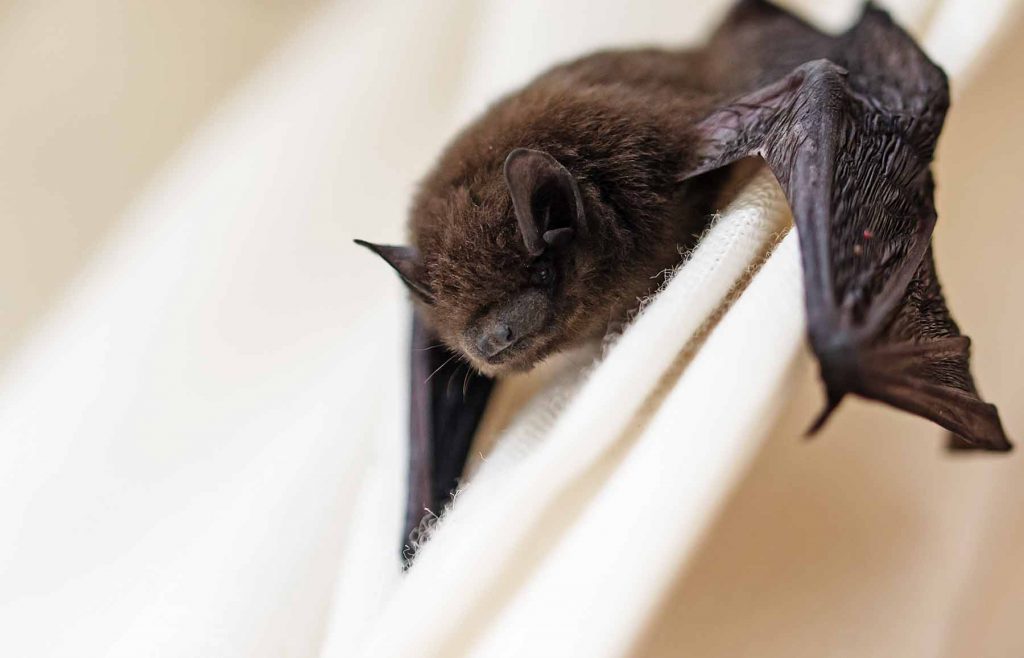One way to recognize a bat infestation in Raleigh, NC is by observing their droppings, also known as guano. Bat droppings are small and look similar to mouse droppings, but they have a shiny appearance due to the insect exoskeletons they consume. Another sign of a bat infestation is the presence of bat noises. Bats are nocturnal creatures and are most active at night, so if you hear scratching or squeaking sounds coming from your attic or walls during nighttime hours, it could be an indication of a bat colony nearby. Additionally, if you notice a strong, musty odor in your home, it could be a sign of bat urine, which has a distinct smell. Another way to recognize a bat infestation is by spotting bats flying in and out of your home at dusk or dawn. Bats often roost in attics, chimneys, or other dark and secluded areas during the day and emerge at night to hunt for insects. If you notice any of these signs, it is important to contact a professional pest control company specializing in bat removal to safely and effectively handle the infestation.
How to Recognize a Bat Infestation in Raleigh, NC
1. Mysterious Noises
If you find yourself lying awake at night, puzzled by strange rustling or scratching sounds coming from your attic or walls, it might be a sign of a bat infestation. Bats are nocturnal creatures, so these eerie noises often occur during the late hours when they become active. Be attentive to any persistent sounds that seem out of place, as they could indicate a colony of bats has made your home their own.
2. Unpleasant Odors
Another telltale sign of a bat infestation is the presence of a distinct, musty odor. Bats tend to roost in large numbers, and their droppings (known as guano) can accumulate quickly. As guano decomposes, it releases an unpleasant smell that may permeate your home. If you notice an unusual odor that persists even after thorough cleaning, it’s advisable to investigate further for a potential bat infestation.
3. Stains and Grease Marks
Bats have oily fur that can leave noticeable stains and grease marks on the surfaces they frequently touch. Check your walls, windows, and other entry points for any dark or greasy smudges. These marks are often found near roosting sites or access points where bats enter and exit your home. By identifying these stains, you can gain insight into their preferred routes and locate potential nesting areas.
4. Guano Accumulation
As mentioned earlier, bat guano is a clear indication of a bat infestation. It accumulates in areas where bats congregate, such as attics, chimneys, or crawl spaces. Look for piles of droppings beneath roosting sites or along the edges of walls and windowsills. Bat guano resembles small, elongated pellets and may vary in color depending on the bat species. If you find a substantial amount of guano, it’s crucial to address the infestation promptly to prevent potential health risks.
5. Sightings and Flight Patterns
While bats are generally elusive creatures, you may occasionally spot them flying around your property or in nearby areas during dusk or dawn. Pay attention to their flight patterns, as erratic movements or a large number of bats could indicate a nearby roosting site. If you frequently see bats entering or exiting your home through small openings, it’s a clear indication that they have established a colony within your property.
6. Damage to Property
Bats can cause damage to your property over time. Their sharp teeth can gnaw on wood, insulation, electrical wiring, and other building materials. Look for signs of chewed or damaged structures, especially near potential entry points like vents, chimneys, or loose tiles. If left unaddressed, bat infestations can lead to costly repairs and compromise the structural integrity of your home.
7. Unusual Behavior of Pets
Observing your pets’ behavior can provide valuable insights into the presence of bats. Dogs and cats may exhibit unusual excitement or restlessness, constantly staring at walls or ceilings where bats might be active. They might also become anxious or agitated during nighttime when bats are most active. If your pets display such behavior consistently, it’s worth investigating further for a potential bat infestation.
In conclusion, recognizing a bat infestation in Raleigh, NC requires attentiveness to peculiar noises, odors, stains, guano accumulation, sightings, property damage, and changes in pet behavior. Identifying these signs early on can help you take appropriate action to ensure the safety and comfort of your home. Remember, professional assistance is crucial for the humane removal and prevention of bat infestations.
Contact For Wildlife Control Help
If you are in need of professional animal removal services, do not hesitate to give us a call at Triangle Wildlife Removal. Our experienced team is dedicated to providing efficient and humane solutions for wildlife control. With our expertise and state-of-the-art equipment, we can safely remove any unwanted animals from your property. We understand the urgency and potential risks associated with wildlife intrusions, which is why we offer prompt and reliable services. Don’t let unwanted animals cause damage or pose a threat to your safety – contact Triangle Wildlife Removal today at (919) 661-0722.
